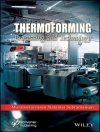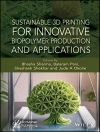A thorough, accessible, and general overview of chemosensors
Providing a comprehensive overview of chemosensors–organic
molecules designed to bind and sense small molecules or metal
ions–and their applications, Chemosensors: Principles,
Strategies, and Applications is an accessible one-stop resource for
analysts, clinicians, and graduate students studying advanced
chemistry and chemosensing.
Chemosensors function on a molecular level, generating a signal
upon binding. The book reviews their synthesis, design, and
applications for detecting biological and organic molecules as well
as metal ions. The text highlights applications in drug discovery
and catalyses that have not been well covered elsewhere.
Covering such topics as molecular recognition, detection
methods, design strategies, and important biological issues, the
book is broken into four sections that examine intermolecular
interactions, strategies in sensor design, detection methods, and
case studies in metal, saccharide, and amino acid sensing.
An indispensable source of information for chemical and
biomedical experts using sensors, Chemosensors includes case
studies to make the material both accessible and understandable to
chemists of all backgrounds.
Зміст
Contributors.
Preface.
SECTION 1 FORCES GOVERNING EXCHANGEABLE INTERACTIONS.
1 van der Waals Interactions and the Hydrophobic Effect
(Bruce C. Gibb).
2 Ionic, Hydrogen Bond, and p -Cation Interactions
(Hector Adam Velazquez and Donald Hamelberg).
3 Covalent Interactions in Chemosensor Design (Yunfeng Cheng,
Xiaochuan Yang, and Binghe Wang).
4 Metal Chelation Chemistry (Dongwhan Lee).
SECTION 2 STRATEGIES TOWARD BUILDING THE DESIRED BINDING
MOIETY.
5 Scaffold Design Using Computational Chemistry (Dale
Drueckhammer).
6 Combinatorial Search of Sensors (Marc Vendrell, Suihan
Feng, and Young-Tae Chang).
7 Molecular Imprinting and Sensor Development (Yagang Zhang
and Ken D. Shimizu).
8 Dendrimer-Based Sensors (Lin Pu).
9 Nanoparticles and Sensors (Yi-Cheun Yeh, Sarit S. Agasti,
Krishnendu Saha, and Vincent M. Rotello).
10 Aptamer Selection, Phage Display, and Sensor Development
(Hui Wang, Yan Chen, and Weihong Tan).
11 Sensor Development Using Existing Scaffolds (Hiroyasu
Yamaguchi, Tomoki Ogoshi, and Akira Harada).
SECTION 3 DETECTION METHODS IN CHEMOSENSING.
12 Fluorescent Detection Principles and Strategies (Raman
Parkesh, Emma B. Veale, and Thorfinnur Gunnlaugsson).
13 New Fluorophore Design (Michael D. Heagy).
14 Colorimetric Sensor Design (Kevin L. Bicker, Sheryl L.
Wiskur, and John J. Lavigne).
15 Electrochemical Detection (Simon R. Bayly, George Z. Chen,
and Paul D. Beer).
16 Surface Plasmon Resonance and Quartz Crystal Microbalance
Methods for Detection of Molecular Interactions (Yang Liu,
Archana Jaiswal, Mark A. Poggi, and W. David Wilson).
17 Array-Based Sensors (Pavel Anzenbacher and Manuel A.
Palacios).
SECTION 4 CHEMOSENSORS: CASE STUDIES.
18 Design of Cation-Selective Synthetic Fluorescent Indicators
(Christoph J. Fahrni).
19 Anion Sensors (Philip A. Gale and Claudia
Caltagirone).
20 Chemosensors: Case Studies of Indicators for Organic
Molecules (Oleksandr Rusin, Jorge O. Escobedo, and Robert M.
Strongin).
21 Molecular Recognition Elements for Toxin and Pathogen
Detection (Daniel M. Lewallen, Duane M. Hatch, and Suri S.
Iyer).
22 Chemical Sensing and Detection in Forensic Science (Simon
W. Lewis).
Index.
Про автора
BINGHE WANG, Ph D, is Professor and Chair of the Department
of Chemistry at Georgia State University as well as Georgia
Research Alliance Eminent Scholar in Drug Discovery. He is
Editor-in-Chief of the journal Medicinal Research Reviews, series
editor for the Wiley Series in Drug Discovery and Development, and
coeditor of Drug Delivery: Principles and Applications and
Carbohydrate Recognition: Biological Problems, Methods, and
Applications, both from Wiley.
ERIC V. ANSLYN, Ph D, is the Norman Hackerman Professor of
Chemistry at the University of Texas at Austin. His research
interests include physical organic chemistry, molecular
recognition, sensor design, and sensor arrays.












